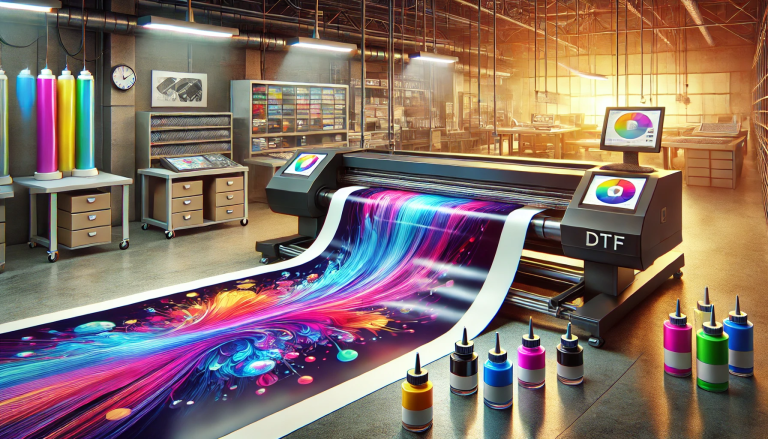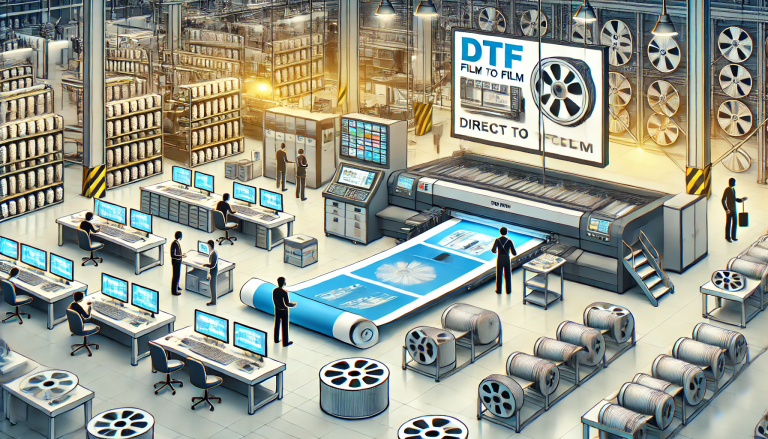DTF (Direct to Film) transfer film sheets have revolutionized the printing industry, offering a versatile and efficient method for transferring designs onto various substrates. This innovative technology enables high-quality, durable prints on a wide range of materials, including those that are traditionally challenging for direct printing methods. The process involves printing a design onto a special film and then transferring it to the desired substrate using heat and pressure. This article explores the technology, benefits, applications, and considerations of using DTF transfer film sheets.
Understanding DTF Technology
DTF printing technology involves three key components: the special transfer film, the ink used for printing, and the adhesive powder. Initially, a design is printed in reverse on the transfer film using DTF-specific ink. After printing, an adhesive powder is applied to the wet ink, which adheres only to the printed areas. The film is then cured (dried) to set the ink and adhesive. The final step involves using a heat press to transfer the design from the film onto the substrate. The heat activates the adhesive, creating a strong bond between the print and the substrate, after which the film is peeled away, leaving the design on the material.
Advantages of DTF Transfer Film Sheets
The use of DTF transfer film sheets offers several advantages over traditional printing techniques such as screen printing and DTG (Direct to Garment):
- Versatility: DTF technology can be used on a wide variety of substrates, including cotton, polyester, silk, and blends, without the need for pre-treatment.
- Durability: Prints created using DTF technology are highly durable and resistant to washing, fading, and cracking.
- High Quality: DTF prints are known for their sharpness, vibrant colors, and high resolution.
- Efficiency: The process is quicker and less labor-intensive than screen printing, making it suitable for both small and large-scale production.
- Cost-Effectiveness: DTF printing requires less setup time and materials, reducing the overall cost of production.
Applications of DTF Transfer Film Sheets
DTF transfer film sheets are used in various applications, showcasing their adaptability across different industries:
- Apparel: Customizing t-shirts, hoodies, and hats with logos, designs, and artwork.
- Fashion: Creating unique patterns and designs for dresses, skirts, and other clothing items.
- Merchandising: Producing promotional items, bags, and accessories with company branding.
- Home Decor: Applying designs to cushions, curtains, and upholstery fabrics.
Considerations When Using DTF Transfer Film Sheets
While DTF printing offers numerous benefits, there are important considerations to keep in mind:
- Equipment and Material Quality: The quality of the printer, ink, film, and adhesive powder significantly affects the outcome. Investing in high-quality supplies is crucial for achieving the best results.
- Compatibility: Not all fabrics and materials are equally suited for DTF transfers. Testing is recommended to ensure compatibility and durability.
- Environmental Factors: Proper disposal of waste materials and the use of eco-friendly inks and powders can help mitigate the environmental impact of DTF printing.
Conclusion
DTF transfer film sheets have emerged as a game-changer in the printing industry, offering an efficient, versatile, and high-quality solution for transferring designs onto a myriad of substrates. The technology’s benefits of durability, versatility, and cost-effectiveness make it an attractive option for businesses and individuals alike. As the technology continues to evolve, it is expected to expand its applications and improve its environmental footprint, further solidifying its position in the market. Whether for small custom projects or large-scale production, DTF printing represents a significant advancement in printing capabilities, promising continued growth and innovation in the field.




